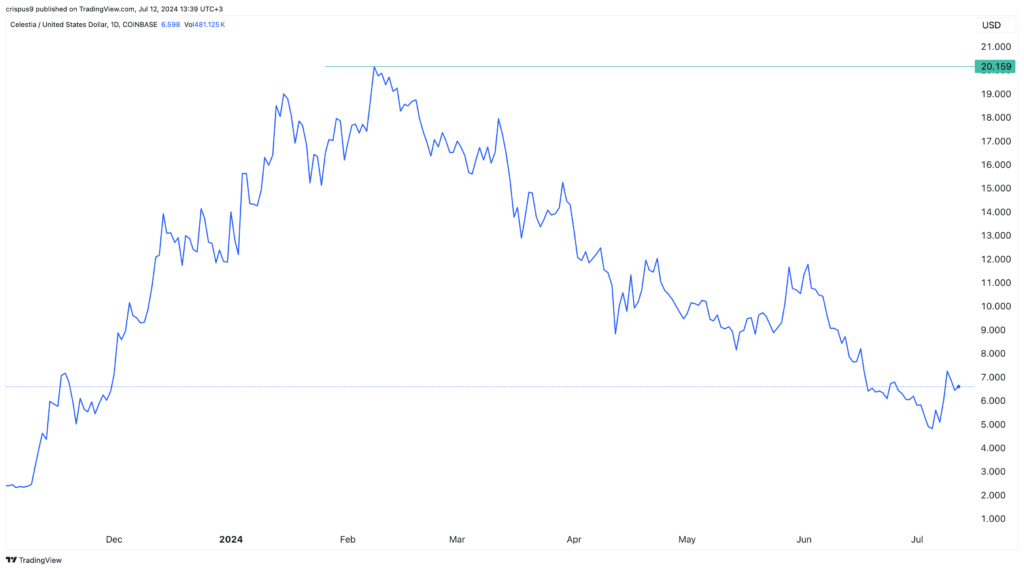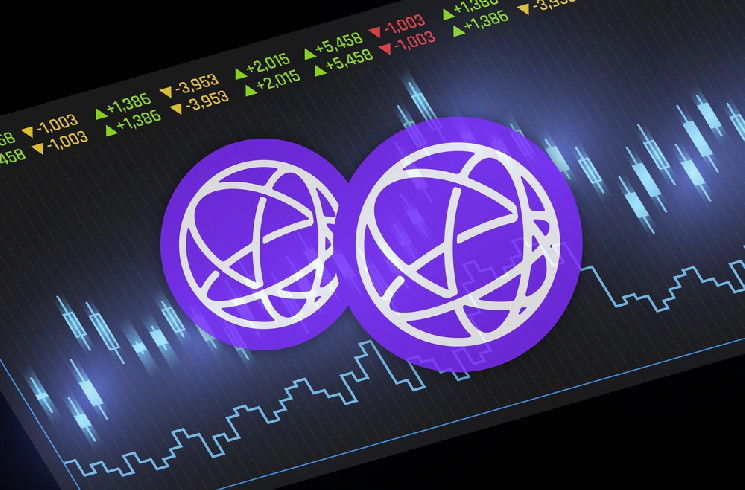Celestia (TIA) has become one of the most popular cryptocurrencies among yield-focused investors.
Strong staking yield
Data by StakingRewards shows that Celestia offers one of the most attractive staking yields in the industry. The TIA token has a reward rate of 10.7%, higher than other popular cryptocurrencies like Ethereum, Avalanche, Tron, and Solana.
Ethereum, the biggest proof-of-stake network in the industry, yields 3.3% while Solana has a staking rate of 7%. Avalanche yields 7.5% while Tron yields 4.15%.
Additional data shows that most of the Celestia tokens have been staked. It has a $4.7 billion staking market cap against a total market value of over $6.5 billion.
The 10.7% staking reward rate means that $10,000 invested in Celestia will provide a staking reward of $1,077. This is an exciting reward considering that in ten years, everything held constant, the reward will be about $10,770.
That reward is significantly bigger than what other popular financial assets are offering. For example, the popular Schwab US Dividend Equity ETF (SCHD) yields 3.5% while the 10-year US government bond yields at about 4%.
Of course, considering the staking yield alone is not the best approach when investing. As I have warned before on dividend stocks like Realty Income, one should consider the total return. The total return is a calculation made up of an asset’s price and the yield offered.
For example, $10,000 invested in Celestia at its peak of $20.15 in March would now be $3,473 since the token has plunged by over 67%. Inclusive of the staking rewards, the amount would still be worth less than $4,000.

Celestia price chart
Celestia faces more challenges
Meanwhile, Celestia investors faces more challenges ahead. One of the core issues is that it is open to dilution in the coming years. Data compiled by CoinMarketCap shows that over 267 million TIA tokens have been unlocked. These tokens are about 25% of the total.
At the same time, over 731 million tokens are yet to be unlocked while 57.38 million are untracked. The unlock schedule is expected to end in 2027, meaning that there will be more token unlocks going forward.
The next token unlock is expected to happen in November when the developers will unlock over 522 million tokens.
Token unlocks are usually bad for cryptocurrencies for several reasons. First, it tends to lead to increased selling before and after the unlock from the token receivers. Second, it can also lead to a reduced staking yield as more investors stake their tokens. Further, there is usually significant market volatility before and after a token unlock event.
The other risk for Celestia price is that it is affected by the price action in the Bitcoin market. For example, the TIA token soared to a record high in March as Bitcoin rallied to an all-time high. Most recently, it has dropped further than Bitcoin as the latter has moved to a bear market.
There are signs that Bitcoin will continue falling in the coming weeks now that it has formed a double-top chart pattern and struggled to move above the resistance point at $60,000. As such, if the daily chart pattern works as expected, there is a likelihood that Celestia will drop as well. The German government is also dumping Bitcoins.
For starters, Celestia is a leading company that offers a modular data availability tool that scales as the number of users grow. This is a good approach since it lets anyone launch their own blockchains easily.
For example, rollups and layer 2 networks use Celestia to publish and make dat available to anyone easily. Some of the companies using Celestia are the likes of Manta Network, Alpha Dune, and Astria.
The post Celestia has a staking yield of 10.7%; is the TIA token a buy? appeared first on Invezz
 invezz.com
invezz.com
